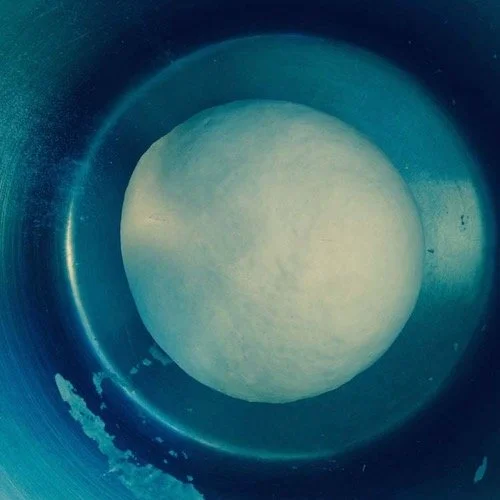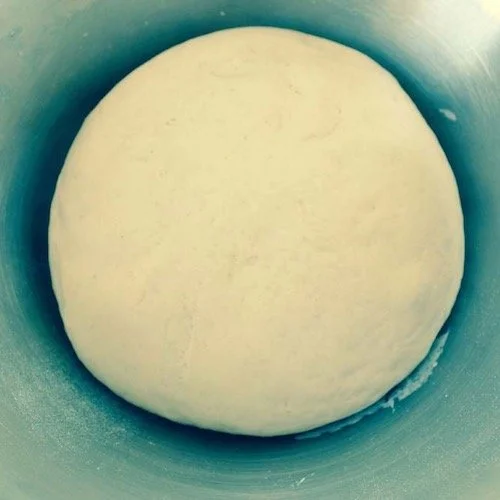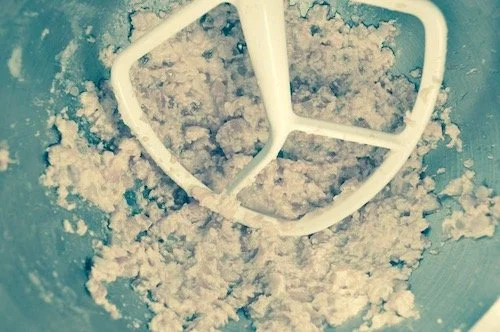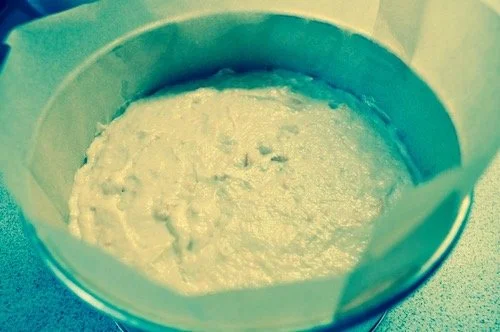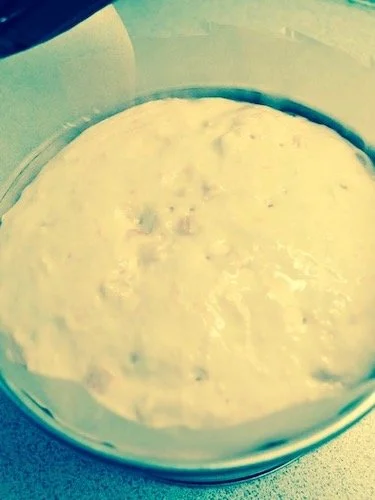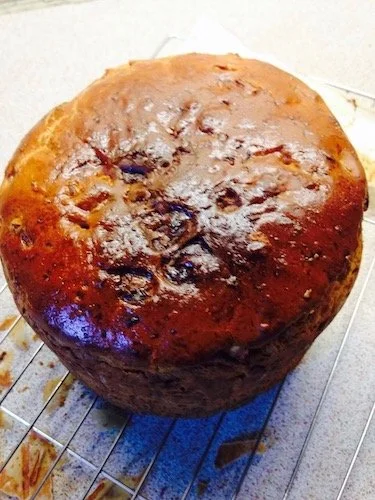Negroni, white chocolate & macadamia panettone
Image by stillmotionarts
Gin bread
Great British Bake Off season is upon us once again. To mark it, Glasgow Gin Club asked if I'd like to create a guest recipe for them, to tie in with this week's episode: bread. Gin-themed, of course! Gin bread? I was flummoxed. Then inspiration hit. An enriched bread, chockful of Negroni-infused candied orange peel, white chocolate and macadamia nuts.
Borrowing from both brioche and panettone, the dough bears a resemblance to each while not quite being either. I want to call it ‘briottone’ or ‘panettoche’, but as it has the same shape and citrus additions as the Christmassy Italian classic, I've settled on unambiguous panettone. The mixture is so liquid that you literally pour it into the cake tin, but don’t be alarmed, that makes the bread wonderfully moist. Enjoy it on its own, with a hot drink or glass of orange liqueur, as a dessert, or with toppings.
As toasted brioche is a classic accompaniment to pâté, and because duck and orange are a stellar combo, with a bit less chocolate in the mix, 50g say, I have a feeling it will go beautifully with duck liver pâté, the bitterness of the Negroni-infused orange peels perfectly offsetting the pâté’s richness. Ideal for a luxe lunch, bon vivant dinner party bash or appropriately festive Christmas day starter.
Let me know how you enjoy eating it!
Thinking of optimising your health with your diet?
Time
Prep: 50-60 minutes
Sponge: 20-30 minutes
Rising and proving: 4-4½ hours
Baking: 50-55 minutes
Ingredients (makes 1 x 6-inch round)
100g whole glacé orange peel, excess sugar rinsed off and diced fairly finely*
100ml Negroni (33ml each of gin, Punt e Mes** and Campari)***
10g fresh yeast (or 1¼ teaspoons dried)
125ml lukewarm water (no more than 30°C)
250g strong white flour
15g caster sugar
½ level teaspoon finely ground salt
50g unsalted butter, at room temperature
1 whole medium egg, beaten
Zest of 1 whole orange
50g macadamia nuts, quartered
100g of the best quality white chocolate you can get your hands on, chopped roughly (I use Valrhona Opalys – leave the pistoules whole so they don’t completely melt)
Egg glaze (1 egg yolk beaten with 1 tablespoon water)
Method
Soak the chopped glacé peel in the Negroni. The aim here is to get as much of the alcohol into the fruit as possible, so soak for 24 hours at least. Longer if you're not in any hurry. This can actually be done days, even weeks, in advance; the peel is preserved and alcohol is a preservative. Just pop everything in a glass tupperware container with a tightly fitting lid or a sterilsed jar. Let the fruit soak up the alcohol at your leisure, and use whenever you're in the mood to bake the loaf.
Crumble the yeast into 100ml of the lukewarm water in a small jug/bowl. Leave for 5 minutes, then stir to dissolve.
Mix the sieved flour, sugar and salt together in a large bowl. Make a well in the centre of the flour and add in the yeasted water. Use a wooden spoon to draw enough of the flour into the yeasted water to form a soft paste. Cover the bowl with a tea towel and leave to "sponge" until frothy and slightly risen, 20-30 minutes. (NB: The sponge method adds a period of fermentation to mixing, resulting in a bread with a lighter crumb and a less yeasty flavour.)
Strain the excess Negroni liquid from the glacé orange peel. Combine 50ml of the strained Negroni with the remaining 25ml water.
Mix in the flour from the sides of the bowl, gradually stirring in the 75ml Negroni and water mixture. As the liquid is added, the texture of the combined ingredients will move from a crumbly mixture to a slightly sticky mass that will begin to come away from the sides of the bowl and form into a ball. The end result will be a soft, sticky dough.
Turn the dough out on to a lightly floured work surface. Knead until soft, smooth, silky and elastic, about 10 minutes.
Return the dough to the large bowl and cover with a tea towel. Leave to rise until doubled in size, about 2 hours.
The dough before rising.
After rising.
8. Grease a 6-inch round cake tin (at least 3 inches tall) and line the base and sides with silicon baking paper/baking parchment so that it extends 12cm/5 inches above the top. If you only have greaseproof paper, brush the insides with melted butter (15g will do) or it will stick so fast you won't be able to peel it away from the bread!
9. Knock back the dough, knead for 5 minutes, then leave to rest for 10 minutes.
10. Meantime, place the soft butter in the bowl of an electric stand mixer. Add the strained peel and orange zest and beat with the paddle attachment until thoroughly combined. Gradually add the beaten egg and continue to mix until combined. At this point you'll have a softish paste. Return the dough to the large bowl and cover with a tea towel. Leave to rise until doubled in size, about 2 hours.
Beating the butter, peels and eggs.
11. Next, add the remaining strained Negroni and beat until combined.
12. Remove the paddle attachment from the mixer and replace with the dough hook. Add the rested dough and mix until the two are thoroughly combined, about 5 minutes. If you don’t have a dough hook attachment, go in with your hand, and squeeze the soft ingredients into the dough until they are evenly distributed throughout and the beaten egg is fully absorbed. The mixture will now look like a thick cake batter.
13. Finally, add in the chopped macadamia nuts and chunks of chocolate/whole pistoules. Mix briefly until just combined. Remove the bowl from the stand mixer, and using a spatula fold the mixture to ensure the nuts and chocolate are evenly dispersed throughout.
Fold the mixture until the nuts and choc are evenly combined.
14. Pour the batter into the prepared tin and level the surface, pushing any visible chocolate chunks just below the surface to ensure they won't burn. Holding the tin a few inches above your work surface, drop it down. Repeat several times until the surface is completely level.
15. Cover with a tea towel and leave to prove until the dough has doubled in size, about 2 and a half hours (check after 2 hours).
Before proving.
After proving.
16. Preheat the oven to 180C.
17. Using a soft pastry brush, brush the dough with the egg glaze. Be gentle so as not to rip or deflate the dough. Also, be careful not to "glue" the loaf to the edge of the baking tin.
18. Bake for 45 minutes until the surface is glossy and a deep golden colour (think of the colour of brioche here). Turn out of the tin, place upside down on a baking sheet, and return to the oven for a further 5-10 minutes until hollow-sounding when tapped underneath.
19. Transfer to a wire rack and allow to cool completely before cutting.
20. Best eaten within 1 day (it dries out quickly).
The finished bread.
Recommended products & stockists
*Whole glacé orange peel has a far better flavour than the diced mixed peel you get in tubs, fairly yukky stuff saturated in sugar syrup, which means it will absorb hardly any of the steeping alcohol. However, it's not that easy to get hold of whole glacé peels these days. Try your best local health food shops and delis. Or order from Wholefoods online: Peel - Whole Orange 125g.
**Punt e Mes is an Italian red vermouth with a strong, distinctive flavor, half-way between regular rosso vermouth and Campari. It works better here because it's drier and less sweet. If you can't get hold of it, substitute with a regular red vermouth.
***Unless you're a regular Negroni drinker you're unlikely to have Punt e Mes, any other red vermouth or Campari in your drinks cupboard. In which case, drop into a local pub or cocktail bar with a small container. They'll have no problem giving you a few measures to takeaway. Thanks to Paul from Epicures who did just that for me!
Serving suggestions
In wedges, on its own.
With a hot chocolate or small glass of orange liqueur, e.g. Grand Marnier.
As a dessert with something creamy – in some regions of Italy, panettone is served with mascarpone cream.
With toppings. Sweet or savoury. Crumbly Wensleydale cheese or an aged Gouda come to mind.
With duck liver pâté or foie gras as a luxe starter (perhaps with a little less white chocolate in the dough, 50g say).nter text here


